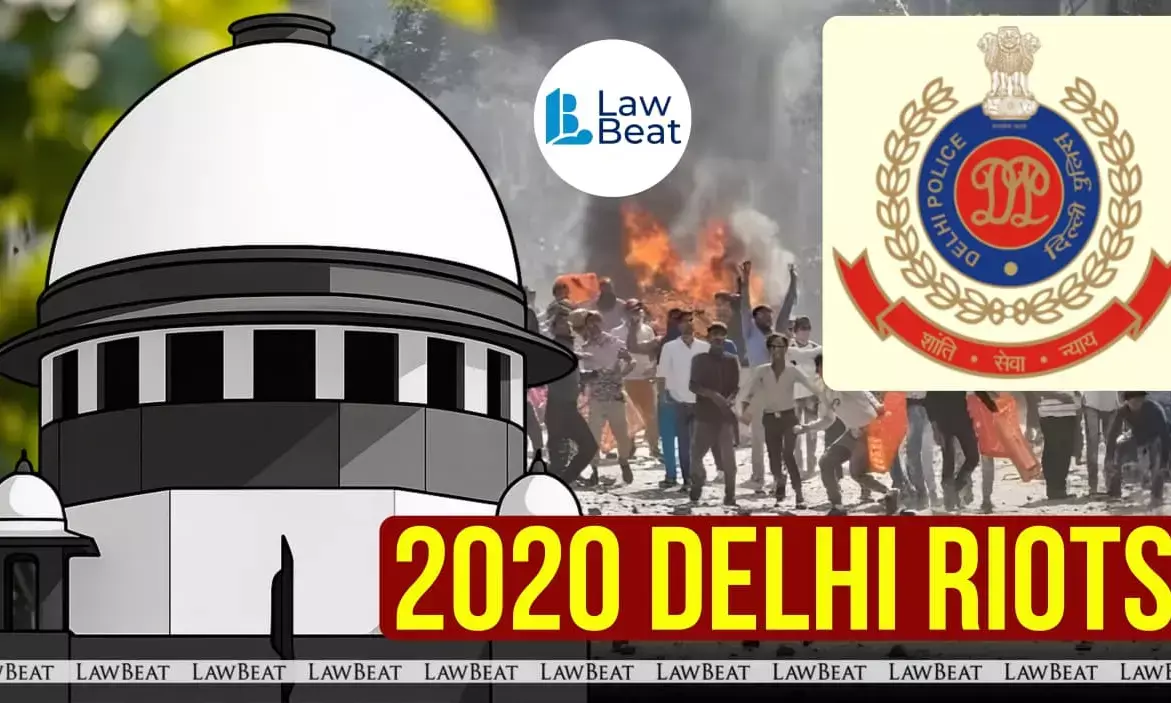2020 Delhi Riots Plot Inspired by Bangladesh and Nepal Governance Style, Supreme Court Told

Delhi Riots Hearing: Prosecution Says Accused Wanted Governance Like Bangladesh, Nepal, Shows Videos to SC
The Supreme Court on Friday continued hearing the bail pleas filed by Umar Khalid, Sharjeel Imam, Gulfisha Fatima, Meeran Haider, Shifa-ur Rehman and Shadab Ahmad, all accused under the Unlawful Activities (Prevention) Act in the alleged larger conspiracy behind the 2020 Delhi riots.
The matter was heard by the Bench of Justice Aravind Kumar and Justice NV Anjaria, with Additional Solicitor General SV Raju presenting detailed submissions on behalf of the Delhi Police.
ASG Raju strongly opposed the bail requests, asserting that the violence that rocked Northeast Delhi was not a peaceful protest against the Citizenship Amendment Act but part of a “well-planned conspiracy” to spark unrest and destabilise the government. He submitted that 53 people were killed and over 530 injured during days of violence that included arson, stone-pelting, acid attacks and use of firearms and chemicals. Public property was extensively damaged, including police vehicles, DTC buses and multiple structures, he said.
Delhi Police also played in open court a video of the Chand Bagh protest, which Raju claimed showed stone pelting and attempts to cover CCTV cameras to “hide the truth”. He pointed out that one police officer and one Intelligence Bureau officer were killed during the riots.
Turning to individual liability, Raju argued that several accused played key operational roles. He told the Bench that Shifa-ur Rehman allegedly financed the disturbances with approximately Rs 8.90 lakh, misusing funds of the AAJMI and faking expenditure bills. Meeran Haider, he said, “funded the riots to the tune of Rs 4.82 lakh” and oversaw activities at eight protest locations.
With respect to Umar Khalid, the ASG claimed that his conduct and speeches reflected a consistent “mindset of agitation and violence”. He stated that Khalid allegedly coined the idea of “chakka-jam” and cited mobile tower location data to place him in the Jamia Nagar area at the time violence broke out on December 15, 2019, when police personnel and over 100 civilians were injured and multiple buses and official property were set ablaze.
ASG Raju further argued that the timing of the escalation, coinciding with the visit of then US President Donald Trump, showed an intention to internationalise the agitation and trigger regime change similar to “what happened in Bangladesh and Nepal”. He submitted that the presence of acid bottles, sticks and organised groups reflected planning far beyond a lawful protest against an enacted legislation. If the standards of Section 43D(5) of UAPA are met, he contended, the accused are not entitled to bail.
Responding to the Bench’s queries, Raju informed the court that statements of 38 out of 47 witnesses have been recorded under Section 164 of the CrPC. He contended that the trial could be completed within two years but said the accused must cooperate.
When asked about the prosecution’s plan of witness examination, he stated that the accused should first complete their arguments on charge.
After hearing the submissions, the Bench adjourned the matter, noting that rejoinder arguments from the accused will be heard on Monday, November 24.
On November 20, ASG Raju argued that the narrative of Imam and others being “educated scholars” unfairly targeted by the state was misleading, and that those who intellectually guide violence are “far more dangerous” than ground-level actors.
On November 3, the six UAPA accused, concluded their arguments before the Court in their pleas seeking bail.
Case Title: Gulfisha Fatima v. State of NCT of Delhi and connected matters
Hearing Date: November 21, 2025
Bench: Justice Aravind Kumar and Justice NV Anjaria
